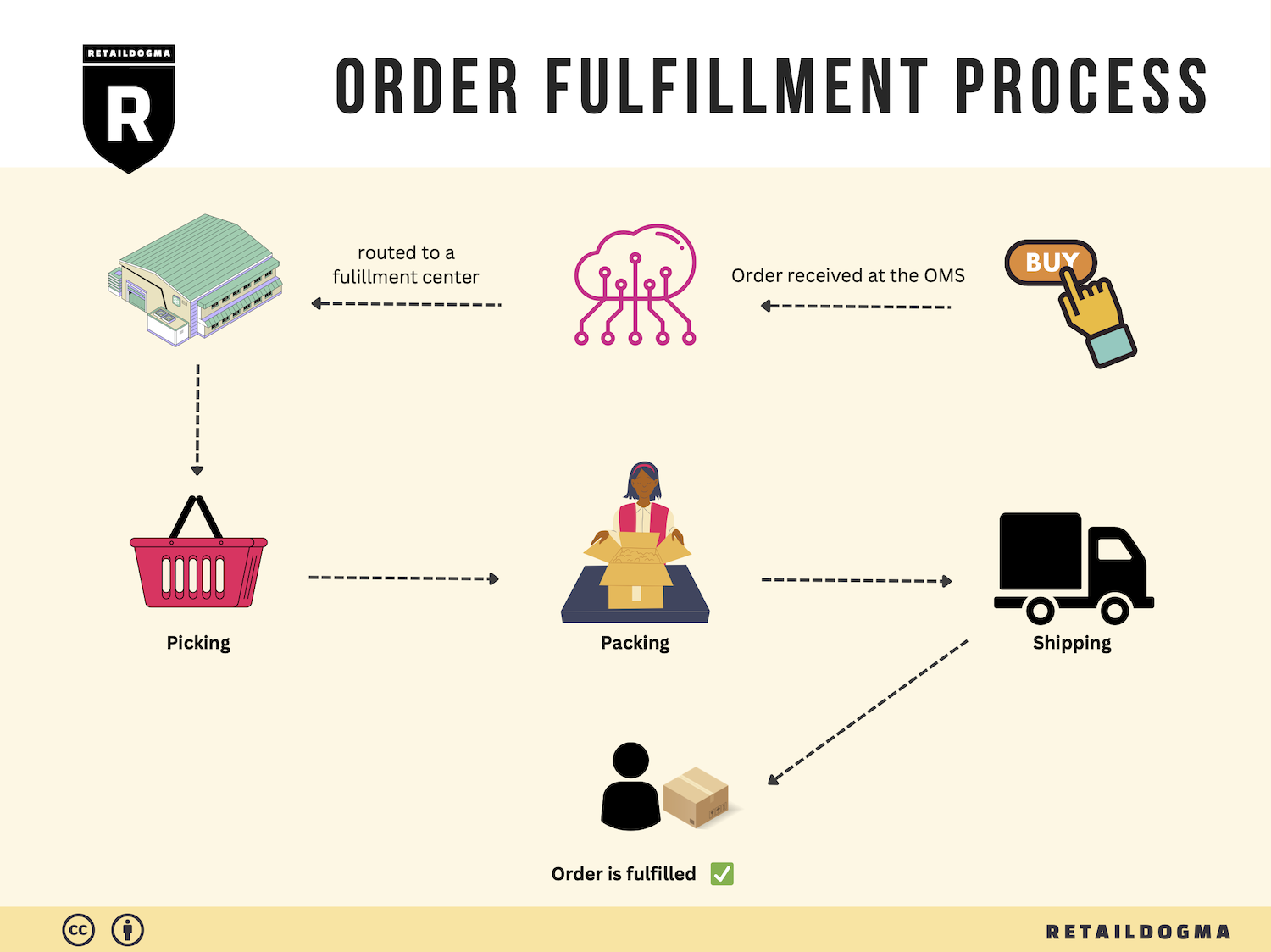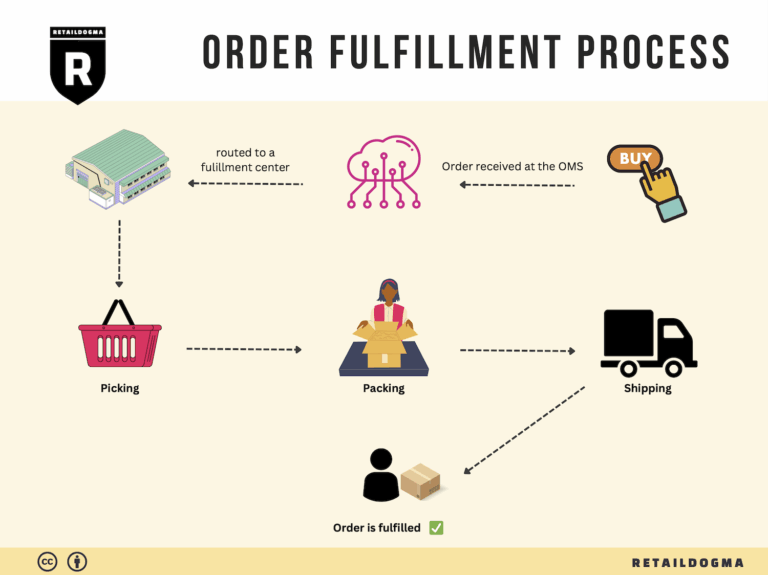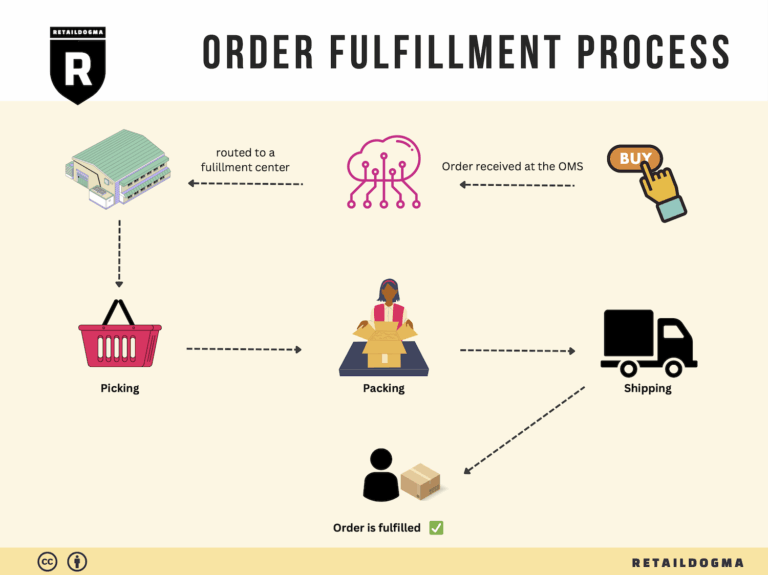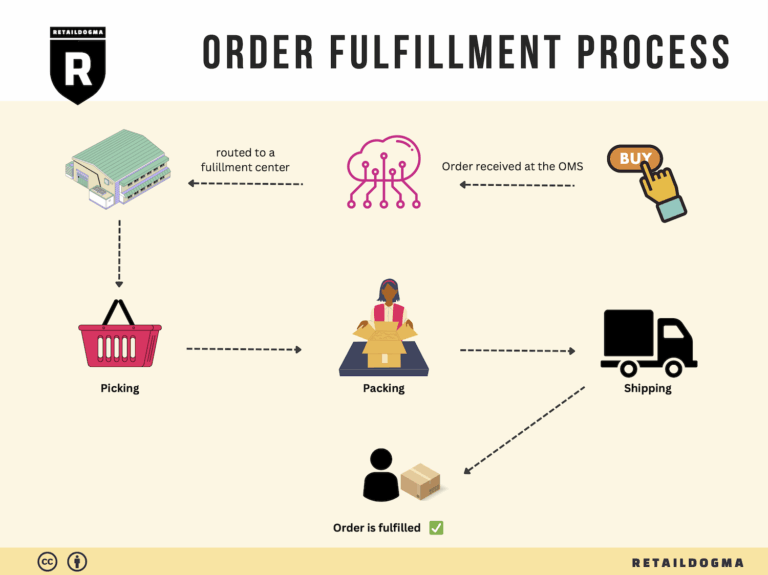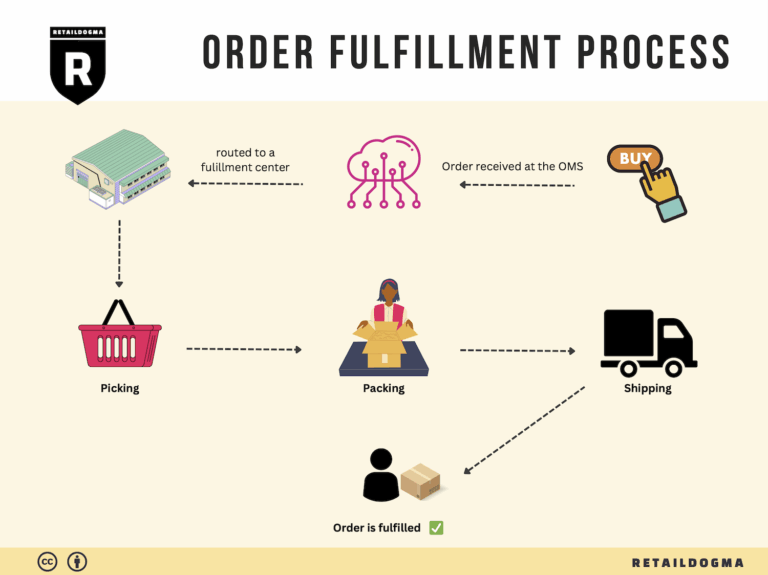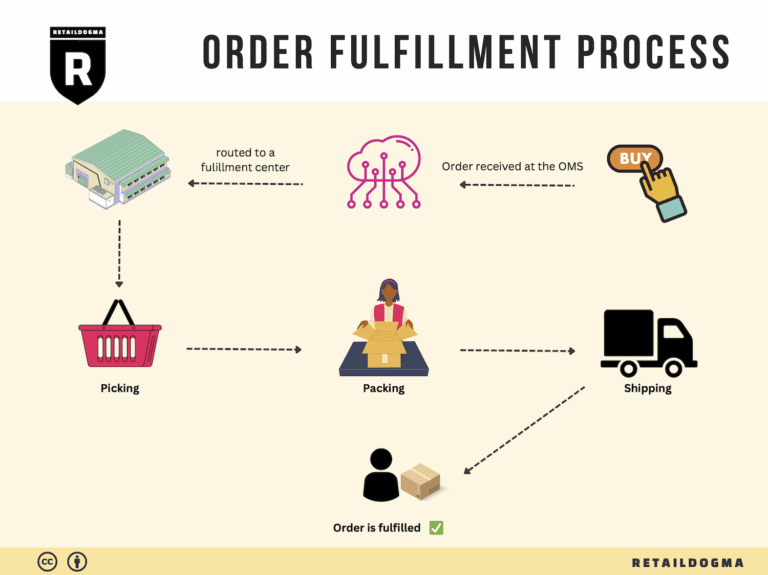Ecommerce Fulfillment Services: The Ultimate Guide (2025)
What is E-commerce Fulfillment? An Introduction for Growing Businesses
As an e-commerce business grows, many owners and operations managers often find themselves overwhelmed by the logistics of packing and shipping orders. The thrill of increased sales can quickly turn into a logistical nightmare if fulfillment processes are not managed effectively. Customers expect prompt and accurate deliveries, and falling short on these expectations can lead to dissatisfaction and lost revenue.
Understanding E-commerce Fulfillment
E-commerce fulfillment is essentially the process of getting a product from your online store to your customer’s doorstep. This involves several steps, including receiving and storing inventory, processing orders, picking items from the warehouse, packing them securely, and arranging for delivery. For many growing businesses, managing these tasks in-house can be daunting, especially as order volumes increase.
In this guide, we will explore various fulfillment models available to e-commerce businesses, such as third-party logistics (3PL) providers and Fulfilled by Amazon (FBA). Each model has its own advantages and disadvantages, and understanding these can help you choose the right approach for your business.
Core Services of Fulfillment
We will delve into the core services that fulfillment providers typically offer. These include inventory management, order processing, shipping logistics, and returns management. Each of these components plays a crucial role in ensuring that your customers receive their orders promptly and in good condition.
Choosing the Right Partner
Selecting the right fulfillment partner is a critical decision that can significantly impact your operations. This guide will outline key factors to consider when evaluating potential partners, including their technology capabilities, shipping options, and customer service support.
Understanding Pricing
Finally, we will break down the costs associated with e-commerce fulfillment. Understanding the pricing structures of different fulfillment options will empower you to make informed financial decisions that align with your business goals.
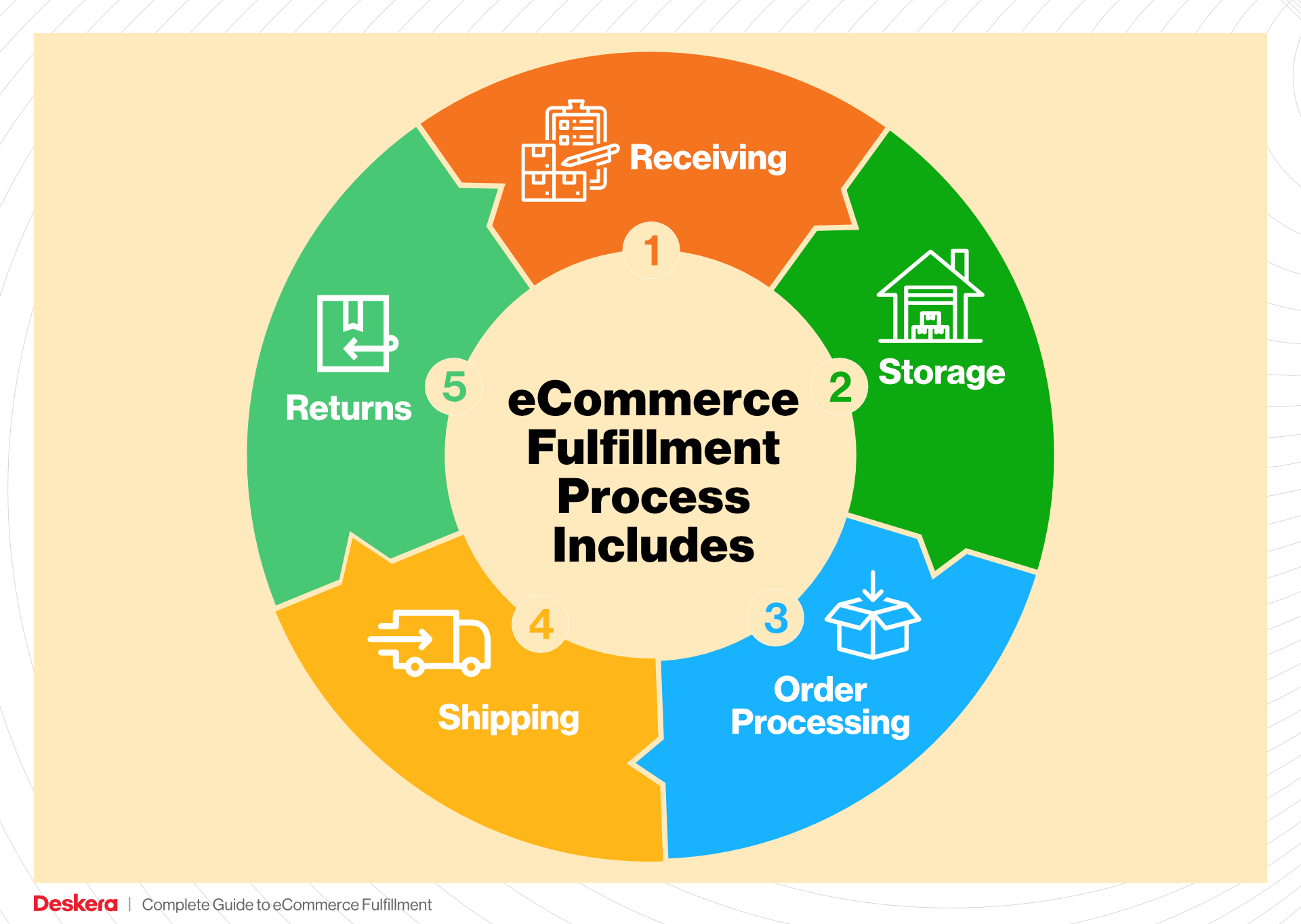
Empowering Smart Decisions
The ultimate goal of this guide is to empower you to make strategic decisions about your logistics and fulfillment processes. By optimizing your fulfillment strategy, you can not only enhance customer satisfaction but also drive more sales and improve your bottom line. Whether you are just starting to explore fulfillment options or are ready to scale your operations, this guide will provide you with the insights you need to succeed.
What You’ll Learn In This Guide
- What is E-commerce Fulfillment? An Introduction for Growing Businesses
- The Order Fulfillment Process: From ‘Buy’ Button to Customer’s Door
- Comparing Fulfillment Models: In-House vs. 3PL vs. Dropshipping
- A Deep Dive into Amazon FBA: Pros, Cons, and Who It’s For
- Core Services Offered by Fulfillment Centers
- How to Choose a Fulfillment Partner: A 6-Point Checklist
- Understanding Fulfillment Pricing: A Breakdown of Common Fees
- Frequently Asked Questions (FAQs) about Fulfillment
- Conclusion: Is Outsourcing Fulfillment the Right Move for Your Business?
- Important Disclaimer
The Order Fulfillment Process: From ‘Buy’ Button to Customer’s Door
1. Receiving Inventory
The order fulfillment process begins with receiving inventory from suppliers or manufacturers. This step involves the physical delivery of products to a fulfillment center, where they are checked for accuracy against purchase orders. Each item is assigned a unique Stock Keeping Unit (SKU) to track inventory levels effectively.
Importance: Proper receiving ensures that the right products are in stock and in good condition, which is critical for maintaining customer satisfaction. If items are damaged or incorrect, it can lead to delays in order fulfillment and potential loss of sales.
Key Term: SKU (Stock Keeping Unit) – A unique identifier for each product that helps in inventory tracking and management.
2. Warehouse Storage
Once inventory is received, it is stored in a designated area within the fulfillment center. Effective warehouse storage practices include organizing products in a manner that maximizes space and facilitates easy access. This may involve categorizing items by type, size, or frequency of sale.
Importance: Efficient storage solutions minimize the time spent locating items when orders come in. This is crucial for meeting customer expectations for quick delivery. A well-organized warehouse also helps in preventing stockouts and overstock situations, both of which can negatively impact a business’s bottom line.
Key Term: Warehouse Management System (WMS) – A software tool that assists in managing inventory levels, tracking product locations, and optimizing storage layouts.
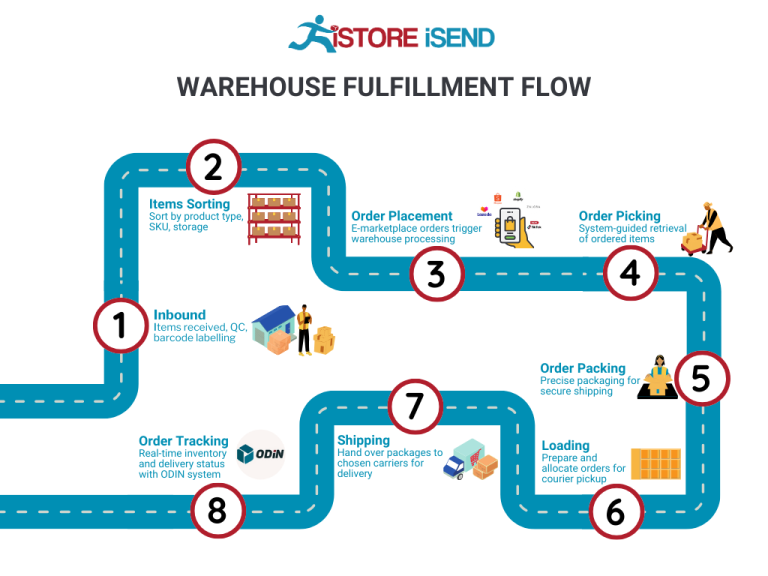
3. Order Picking
When a customer places an order, the fulfillment center must locate and retrieve the purchased items. This process, known as order picking, involves using pick lists, which are documents that outline the items and their locations within the warehouse.
Importance: Efficient order picking is essential for ensuring that orders are fulfilled accurately and quickly. Errors in this stage can lead to customer dissatisfaction and returns, which can harm the brand’s reputation and increase operational costs.
Key Term: Pick List – A document or digital tool that guides warehouse staff in selecting the correct items for customer orders, indicating their location and quantity.
4. Order Packing
After items have been picked, they are prepared for shipment in the order packing stage. This includes placing items in appropriate packaging, adding necessary documentation (like invoices), and ensuring that the products are secure and protected during transit.
Importance: Proper packing safeguards against damage during shipping and is vital for delivering an exceptional customer experience. Packaging also plays a role in branding; attractive and sturdy packaging can enhance customer perception of the brand.

Key Term: Packing Slip – A document included in the shipment that lists the items contained within the package, ensuring that customers receive everything they ordered.
5. Shipping & Delivery
The final step in the fulfillment process is shipping and delivery. Once packed, orders are handed over to shipping carriers for transportation to the customer’s specified address. Businesses must choose carriers based on factors such as shipping speed, cost, and reliability.
Importance: Timely and accurate delivery is a key factor in customer satisfaction. The ability to offer various shipping options (like expedited shipping) can also influence a customer’s purchasing decision and encourage repeat business.
Key Term: Last-Mile Delivery – The final step of the shipping process where the product is delivered from a transportation hub to the customer’s doorstep, often considered the most crucial part of the delivery process.
By understanding and optimizing each of these steps in the order fulfillment process, e-commerce businesses can enhance operational efficiency, reduce costs, and ultimately drive customer satisfaction and loyalty.
Comparing Fulfillment Models: In-House vs. 3PL vs. Dropshipping
Fulfillment Model Comparison
| Model | Who Handles Inventory | Best For (Business Stage) | Key Advantage | Key Disadvantage |
|---|---|---|---|---|
| In-House Fulfillment | The business itself | Startups and small businesses | Complete control over inventory and processes | High operational costs and resource demands |
| Third-Party Logistics (3PL) | Fulfillment provider | Growing businesses | Scalability and access to expert services | Less control over inventory and processes |
| Dropshipping | Supplier or manufacturer | New or niche businesses | Low startup costs and minimal risk | Lower profit margins and potential quality issues |
In-House Fulfillment
In-house fulfillment refers to the process where a business manages its own inventory, order processing, and shipping operations. This model is often adopted by startups and small businesses that have limited product lines and want complete control over their logistics. The key advantage of in-house fulfillment is that it allows businesses to maintain direct oversight of their inventory and fulfillment processes. This means greater flexibility in operations, the ability to customize packaging, and immediate access to inventory for quality control. However, as a business scales, the operational costs can become burdensome. Managing a warehouse, hiring staff, maintaining shipping logistics, and investing in technology can strain resources and distract from core business activities. For many, transitioning from in-house fulfillment to a more scalable solution becomes essential as order volumes increase.
Third-Party Logistics (3PL)
Third-party logistics (3PL) involves outsourcing fulfillment operations to a specialized provider. This model is particularly beneficial for growing businesses that need to scale their logistics without the overhead of managing a fulfillment center. A 3PL partner typically offers services such as warehousing, inventory management, order processing, and shipping, all supported by advanced technology and expertise. The key advantage of using a 3PL is scalability; businesses can adjust their logistics capabilities based on demand without significant capital investment. Additionally, 3PLs often have established relationships with shipping carriers, allowing for reduced shipping costs and faster delivery times. However, one of the downsides of 3PL is the reduced control over inventory and fulfillment processes. Businesses must rely on the 3PL’s capabilities and responsiveness, which can sometimes lead to challenges in maintaining brand standards or managing customer expectations.
Dropshipping
Dropshipping is a fulfillment model where a business sells products it does not physically hold in inventory. Instead, when a product is sold, it is purchased from a third-party supplier who then ships directly to the customer. This model is particularly advantageous for new or niche businesses with limited capital to invest in inventory upfront. The primary benefit of dropshipping is the low barrier to entry; entrepreneurs can start selling without the need for warehousing or fulfillment infrastructure. This minimizes financial risk and allows for greater flexibility in product offerings. However, dropshipping also comes with its challenges. Profit margins tend to be lower since suppliers often charge a premium for their services. Additionally, businesses face risks related to product quality and shipping delays, as they have less control over the fulfillment process. As a result, managing customer expectations can be more challenging, making it crucial for dropshipping businesses to choose reputable suppliers and maintain transparent communication with customers.
Conclusion
Selecting the right fulfillment model is critical for e-commerce businesses, especially those looking to scale. In-house fulfillment offers control but can become costly and complex as order volumes grow. Third-party logistics provide scalability and expertise, making them a popular choice for expanding businesses. Meanwhile, dropshipping presents a low-risk entry point for new ventures but comes with its own set of challenges. Business owners must carefully assess their operational needs, growth projections, and resources when choosing the fulfillment strategy that best aligns with their objectives.
A Deep Dive into Amazon FBA: Pros, Cons, and Who It’s For
What is Fulfillment by Amazon (FBA)?
Fulfillment by Amazon (FBA) is a service offered by Amazon that allows e-commerce sellers to store their products in Amazon’s fulfillment centers. When a customer places an order for a seller’s product, Amazon takes care of the entire fulfillment process, including storage, packing, shipping, and customer service. This service is designed to help sellers reach a wider audience by leveraging Amazon’s extensive logistics network and customer trust.
How FBA Works
-
Product Listing: Sellers list their products on Amazon’s marketplace, choosing to enroll those items in the FBA program.
-
Shipping Inventory: Sellers send their products to Amazon’s fulfillment centers. Amazon provides detailed guidelines on how to prepare and package items for shipment.
-
Storage and Management: Once the inventory arrives at the fulfillment center, Amazon takes responsibility for storing it securely until it is sold.
-
Order Processing: When a customer places an order, Amazon picks, packs, and ships the product directly to the customer, typically within a few days.
-
Customer Service: Amazon handles all customer service inquiries, including returns and refunds, giving sellers more time to focus on other business aspects.
-
Multi-Channel Fulfillment: Sellers can also use FBA to fulfill orders from other sales channels (e.g., their own websites), allowing for a cohesive logistics strategy.
Pros of Fulfillment by Amazon
Prime Eligibility
One of the standout benefits of using FBA is that products become eligible for Amazon Prime. This feature attracts a vast audience of Prime members who expect fast, reliable shipping. By offering Prime shipping, sellers can significantly increase their sales potential, as Prime members are known to spend more on products that qualify.
Customer Trust
Amazon is synonymous with online shopping, and customers trust the platform for its reliability and customer service. When sellers use FBA, their products are associated with Amazon’s reputation, enhancing consumer confidence. This trust can lead to higher conversion rates and repeat customers.
Multi-Channel Fulfillment
FBA allows sellers to fulfill orders not just from Amazon but also from other platforms like eBay, Shopify, or their own websites. This flexibility means that sellers can streamline their logistics processes and benefit from Amazon’s efficient shipping and handling, regardless of where the sale occurs.
Scalability
With FBA, sellers can scale their businesses without having to invest heavily in logistics infrastructure. As sales grow, Amazon can handle increased order volumes without requiring sellers to hire additional staff or expand warehouse space.
Advanced Tools and Analytics
Amazon provides sellers with access to sophisticated tools and analytics that can help in inventory management, sales tracking, and performance metrics. These insights are invaluable for optimizing product listings and improving overall business strategies.
Cons of Fulfillment by Amazon
High Fees
While FBA can simplify logistics, it comes with a range of fees that can eat into profit margins. Sellers incur costs for storage, fulfillment, and additional services like returns processing. These fees can add up, particularly for low-margin products or during peak seasons when storage costs may increase.
Strict Inventory Rules
Amazon enforces strict inventory management policies that sellers must adhere to. For example, inventory limits can be imposed based on sales history, which may hinder sellers from stocking enough product to meet demand. Non-compliance with Amazon’s requirements can lead to penalties or even account suspension.
Commingling Risks
FBA operates on a commingling model where inventory from different sellers may be stored together. This can pose risks, particularly if a customer receives a defective or damaged item from another seller. The negative experience may reflect poorly on the original seller, affecting their reviews and reputation.
Limited Control
By outsourcing fulfillment to Amazon, sellers relinquish some control over the shipping and customer service experience. This can be challenging for brands that want to maintain a specific image or level of service, as they must rely on Amazon’s processes and policies.
Complexity in Returns Management
While Amazon handles returns, the process can be complex for sellers, especially if they wish to manage returns differently or want to inspect returned items before restocking. This can lead to complications in inventory management and financial reconciliation.
Who is FBA Best For?
Fulfillment by Amazon is an excellent option for various types of sellers, but it particularly suits:
-
Small to Medium-Sized Businesses: Companies looking to scale without investing heavily in logistics can benefit from FBA’s infrastructure and expertise.
-
Brands with High Sales Volume: Sellers with products that have consistent demand can leverage FBA to manage order fulfillment efficiently, allowing for faster shipping and enhanced customer service.
-
New Sellers: Entrepreneurs who are just starting can take advantage of Amazon’s vast customer base and trusted logistics network to gain initial traction without the complexities of managing fulfillment themselves.
-
Sellers of Diverse Product Lines: Businesses with a wide range of products can benefit from FBA’s multi-channel fulfillment capabilities, allowing them to streamline logistics across various platforms.
In conclusion, FBA offers a blend of advantages that can empower sellers to scale their operations effectively. However, it is crucial for businesses to weigh the costs and limitations against their specific needs and objectives. By understanding both the benefits and drawbacks of FBA, e-commerce entrepreneurs can make informed decisions that align with their growth strategies.
Core Services Offered by Fulfillment Centers
Inventory Management & Warehousing
Inventory management and warehousing are foundational services provided by fulfillment centers that play a crucial role in the e-commerce supply chain. Inventory management involves the systematic tracking and oversight of a business’s inventory levels, orders, sales, and deliveries. This process ensures that businesses maintain optimal stock levels to meet customer demand without overstocking, which can lead to increased storage costs and potential product obsolescence.
Warehousing, on the other hand, refers to the physical storage of goods before they are shipped to customers. Fulfillment centers typically offer secure, organized storage facilities that allow businesses to store their products safely. This is especially beneficial for e-commerce companies that may not have the capacity or resources to manage their own storage solutions.
Benefits:
-
Scalability: As e-commerce businesses grow, their inventory needs may change rapidly. Fulfillment centers provide the flexibility to scale storage up or down based on demand, allowing businesses to adapt without the burden of long-term leases or excess inventory.
-
Efficiency: Advanced inventory management systems (IMS) integrated into fulfillment services provide real-time data on stock levels, enabling businesses to make informed decisions regarding reordering and stock management. This reduces the risk of stockouts and backorders, ensuring that customers receive their orders on time.
-
Cost Savings: By outsourcing inventory management and warehousing, businesses can reduce overhead costs associated with maintaining their own facilities, including utilities, maintenance, and staffing. Fulfillment centers often operate on a pay-per-use model, making it more cost-effective for businesses with fluctuating inventory needs.
Pick and Pack Services
Pick and pack services are critical processes in order fulfillment, where fulfillment centers handle the selection and packaging of products based on customer orders. The “pick” phase involves retrieving the ordered items from the warehouse shelves, while the “pack” phase includes preparing these items for shipping, ensuring they are securely packaged to prevent damage during transit.
Fulfillment centers employ trained staff and efficient systems to streamline these processes, often utilizing technology such as barcode scanning and automated picking systems.
Benefits:
-
Speed and Accuracy: Fulfillment centers are equipped with optimized workflows that allow for quick picking and packing of orders. This speed is essential for meeting customer expectations for fast delivery, particularly in an era where consumers anticipate same-day or next-day shipping.
-
Quality Control: With dedicated staff and technology in place, fulfillment centers can maintain high levels of accuracy in order processing. This minimizes errors, ensuring that customers receive the correct items in perfect condition, which enhances customer satisfaction and loyalty.
-
Focus on Core Business: By outsourcing the pick and pack process, e-commerce businesses can concentrate on their core competencies, such as product development and marketing, rather than getting bogged down in logistical details.
Kitting and Assembly
Kitting and assembly services involve the process of grouping individual items into ready-to-ship sets or kits. This is particularly beneficial for businesses that offer products that are often sold together or require assembly before they can be delivered to customers. For instance, a company selling a DIY furniture set may need to kit various components together for ease of shipping.
Fulfillment centers can manage this process, ensuring that all necessary components are included and packaged correctly before shipping.
Benefits:
-
Enhanced Customer Experience: By providing assembled kits, businesses can offer a better customer experience, as consumers appreciate the convenience of receiving everything they need in one package.
-
Reduced Shipping Costs: Kitting can lead to cost savings on shipping by consolidating multiple items into a single package, which can be more economical than shipping each item separately.
-
Inventory Management: Kitting allows for better inventory management by reducing the number of individual SKUs (Stock Keeping Units) businesses must track. This simplification can lead to improved forecasting and stock management.
Returns Management (Reverse Logistics)
Returns management, also known as reverse logistics, is an essential service provided by fulfillment centers that addresses the processing of returned items. This includes receiving, inspecting, and restocking returned products, as well as managing customer refunds or exchanges. A well-structured returns process is crucial for maintaining customer satisfaction and loyalty.
Benefits:
-
Streamlined Process: Fulfillment centers have established procedures for handling returns, which can significantly simplify the process for e-commerce businesses. This reduces the administrative burden on internal teams and ensures that returns are processed efficiently.
-
Customer Satisfaction: A hassle-free returns process can enhance customer satisfaction. When customers know that returning a product is easy and straightforward, they are more likely to make purchases, knowing they have the option to return if necessary.
-
Data Insights: Returns management can provide valuable insights into customer behavior and product performance. Analyzing return data can help businesses identify trends, such as frequent returns of specific products, enabling them to make informed decisions about inventory and product quality improvements.
In conclusion, partnering with a fulfillment center provides e-commerce businesses with a comprehensive suite of services designed to optimize their logistics and enhance customer satisfaction. By leveraging these core services, businesses can focus on growth and innovation while ensuring their operational efficiency and responsiveness to market demands.
How to Choose a Fulfillment Partner: A 6-Point Checklist
Location & Warehouse Network
Importance: The location of your fulfillment partner’s warehouses plays a crucial role in shipping speed and costs. Strategically located warehouses can reduce transit times and shipping expenses, which is essential for meeting customer expectations for fast delivery.
Questions to Ask:
– Where are your warehouses located, and how does this align with my customer base?
– Do you have multiple fulfillment centers? If so, what regions do they cover?
– How do you manage inventory across different locations to ensure availability and minimize shipping times?
Technology & Integrations
Importance: A robust technology platform can streamline your order fulfillment process, enhance inventory management, and facilitate real-time tracking for both you and your customers. Compatibility with your existing e-commerce systems is essential for smooth operations.
Questions to Ask:
– What order management system (OMS) do you use, and how does it integrate with my e-commerce platform?
– Can your system provide real-time inventory updates and order tracking for my customers?
– Do you support automation in order processing, and what tools do you offer for managing returns and exchanges?
Specializations (e.g., Cold Storage, Oversized Items)
Importance: Depending on your product types, you may need a fulfillment partner with specific capabilities, such as cold storage for perishables or specialized handling for oversized or fragile items. Choosing a partner with the right expertise can prevent damage and ensure compliance with regulations.
Questions to Ask:
– Do you offer specialized services for my product type (e.g., cold storage, hazardous materials, oversized items)?
– What protocols do you have in place for handling and storing specialized products?
– Can you provide examples of your experience with similar products or industries?
Scalability & Capacity
Importance: As your business grows, your fulfillment needs will evolve. A partner that can scale with you—whether through increased order volumes, seasonal spikes, or new product launches—is critical for maintaining service levels and customer satisfaction.
Questions to Ask:
– How do you handle seasonal fluctuations in order volume?
– What capacity do you have for scaling operations, and how quickly can you adapt to increased demand?
– Can you support international shipping if my business expands globally?
Pricing and Contracts
Importance: Understanding the pricing structure and contract terms is vital to avoid unexpected costs and ensure that the partnership remains financially viable as your business grows. Transparent pricing models can help you budget effectively.
Questions to Ask:
– What is your pricing structure? Are there additional fees for services like storage, picking, packing, or returns?
– Can you provide a detailed breakdown of all potential costs associated with fulfillment?
– What are the terms of the contract, and what is the process for terminating or renegotiating if needed?
Customer Support & Reviews
Importance: Quality customer support can make or break your fulfillment experience. A responsive partner can quickly resolve issues and help you maintain a high level of service for your customers. Additionally, reviews and testimonials can provide insight into a partner’s reliability and performance.
Questions to Ask:
– What support services do you offer, and how can I reach your team if issues arise?
– How do you handle errors or delays in fulfillment, and what is your process for communicating these issues to clients?
– Can you provide references or case studies from other clients in my industry?
By thoroughly evaluating these six critical aspects, you can make an informed decision when selecting a fulfillment partner that aligns with your business needs and growth aspirations. The right partner will not only enhance your operational efficiency but also contribute positively to your customer satisfaction and overall business success.
Understanding Fulfillment Pricing: A Breakdown of Common Fees
Initial Setup Fees
When partnering with a fulfillment center, businesses often encounter initial setup fees. These fees are charged to cover the costs associated with onboarding your business into the fulfillment provider’s system. This may include setting up your account, integrating your e-commerce platform, and configuring logistics.
Initial setup fees can vary widely based on the complexity of your needs and the capabilities of the fulfillment center. For instance, if you require customized packing solutions or specialized inventory management systems, the setup costs will likely be higher. It’s essential to clarify what is included in these fees and to ensure that all required integrations and customizations are accounted for.
Receiving Fees
Receiving fees are charged when the fulfillment center accepts your inventory into their warehouse. This fee typically covers the labor and overhead costs associated with unloading shipments, inspecting products for quality, and entering inventory into the system.
The calculation of receiving fees may be based on several factors, including the volume of goods received, the number of distinct SKUs, or even the weight of the shipment. For example, a fulfillment center might charge a flat fee per pallet received or a fee that increases with the number of different items in a single shipment. Understanding these fees can help you optimize your inventory management and shipping practices.
Storage Fees (per pallet/bin)
Storage fees are ongoing charges incurred for keeping your inventory in the fulfillment center’s warehouse. These fees are typically calculated on a per pallet or per bin basis and can vary significantly depending on the location and size of the storage facility.
Fulfillment centers may use different pricing models for storage fees. Some might charge a flat monthly rate per pallet, while others may charge based on the cubic feet of storage used. It’s crucial to ask about tiered pricing structures, as many fulfillment centers offer lower rates for larger volumes of inventory. Additionally, be aware of any potential overage charges for exceeding agreed-upon storage limits, as this can impact your overall logistics costs.
Pick & Pack Fees (per item/order)
Pick and pack fees are charged for the process of selecting items from inventory (picking) and preparing them for shipment (packing). This fee is often calculated on a per-item or per-order basis, depending on how the fulfillment center structures its pricing.
For example, you might see a fee of $1.00 per item picked and packed, or a flat fee of $2.50 per order, regardless of the number of items included. Understanding how these fees are calculated is essential for budgeting, especially if your product offerings change frequently or if you have a diverse catalog. Additionally, many fulfillment centers offer discounts for larger orders, so it’s worth discussing volume-based pricing options.
Shipping Fees
Shipping fees are one of the most significant costs associated with fulfillment. These fees are charged for the transportation of orders from the fulfillment center to the customer and can vary based on several factors, including the destination, the weight and dimensions of the package, and the chosen shipping method (e.g., standard, expedited, or international).
Fulfillment centers often have partnerships with major carriers, allowing them to negotiate discounted rates that can be passed on to you. It’s essential to understand how these shipping fees are calculated and whether your fulfillment provider offers options for optimizing shipping costs. Factors such as package consolidation, regional distribution centers, and shipping frequency can all impact your overall shipping expenses.
Tips for Getting an Accurate Quote
-
Provide Detailed Information: When requesting a quote, provide as much detail as possible about your inventory, expected order volume, and shipping requirements. This helps fulfillment centers tailor their pricing to your specific needs.
-
Inquire About All Fees: Ensure that you ask for a comprehensive breakdown of all potential fees, including hidden costs that may not be immediately apparent, such as returns processing or additional handling charges.
-
Discuss Flexibility: Inquire about how pricing may change if your order volume fluctuates or if you introduce new products. Understanding the scalability of your fulfillment costs is crucial for long-term planning.
-
Compare Multiple Providers: Don’t settle for the first quote you receive. Comparing quotes from several fulfillment centers can provide a clearer picture of the market rates and help you identify the best value for your business.
-
Ask About Discounts: Many fulfillment centers offer discounts for higher volumes or long-term contracts. Make sure to negotiate and inquire about any promotional pricing that may apply.
By understanding these common fulfillment fees and following these tips, you can make more informed decisions that align with your business goals and help you scale effectively.
Frequently Asked Questions (FAQs) about Fulfillment
1. What is a fulfillment center?
A fulfillment center is a specialized warehouse that handles the storage, processing, and shipping of e-commerce orders. It manages the entire order fulfillment process, including receiving inventory, picking and packing items, and shipping them directly to customers. By outsourcing these functions to a fulfillment center, businesses can streamline operations and focus on growth.
2. What’s the difference between a warehouse and a fulfillment center?
While both warehouses and fulfillment centers store inventory, their functions differ significantly. A warehouse primarily focuses on storing goods for long periods, often without immediate shipping needs. In contrast, a fulfillment center is designed for rapid order processing and shipping, facilitating quicker turnaround times for customer orders.
3. What is a 3PL (Third-Party Logistics)?
A 3PL is a logistics service provider that manages various supply chain functions on behalf of a business, including warehousing, fulfillment, shipping, and returns management. Partnering with a 3PL allows e-commerce businesses to leverage the provider’s expertise, technology, and resources to enhance operational efficiency and scalability.
4. How much do fulfillment services cost?
Fulfillment service costs can vary widely based on factors such as order volume, storage needs, shipping destinations, and the specific services required. Generally, costs include storage fees (per cubic foot or pallet), pick and pack fees (charged per order), and shipping costs. It’s essential to obtain quotes from multiple providers to find the best fit for your budget and needs.
5. How does the fulfillment process work?
The fulfillment process typically involves several key steps:
1. Receiving Inventory: Products are delivered to the fulfillment center and checked for accuracy.
2. Storage: Inventory is organized and stored in designated areas within the facility.
3. Order Processing: When a customer places an order, the fulfillment center retrieves the items.
4. Picking and Packing: Items are picked from storage, packed into boxes, and labeled for shipment.
5. Shipping: Packages are handed over to shipping carriers for delivery to the customer.
6. What should I look for in a fulfillment partner?
When choosing a fulfillment partner, consider factors such as:
– Location: Proximity to your customer base can reduce shipping times and costs.
– Technology: Look for providers with robust order management systems and integrations with your e-commerce platform.
– Scalability: Ensure they can accommodate your growth and varying order volumes.
– Customer Service: Responsive support can be crucial in resolving issues quickly.
7. Can I use multiple fulfillment centers?
Yes, using multiple fulfillment centers can enhance your logistics strategy. Distributing inventory across various locations can reduce shipping times and costs, allowing you to better serve customers in different regions. This approach also helps mitigate risks associated with relying on a single facility.
8. How do fulfillment centers handle returns?
Fulfillment centers typically have a dedicated returns management process, often referred to as reverse logistics. This process includes:
1. Receiving Returns: Customers send items back to the fulfillment center.
2. Assessment: Returned items are inspected for damage or defects.
3. Restocking: Qualifying items are reintegrated into inventory for resale.
4. Refunds/Exchanges: The fulfillment center processes customer refunds or exchanges as per your return policy.
9. What technologies do fulfillment centers use?
Fulfillment centers utilize various technologies to optimize their operations, including:
– Warehouse Management Systems (WMS): For tracking inventory and managing order fulfillment.
– Order Management Systems (OMS): To oversee orders from multiple sales channels.
– Shipping Software: For managing shipping rates, labels, and carrier communications.
– Inventory Management Software (IMS): To monitor stock levels and automate reordering processes.
10. How can fulfillment impact customer satisfaction?
Effective fulfillment directly influences customer satisfaction by ensuring timely, accurate, and cost-effective deliveries. Meeting or exceeding delivery expectations can enhance customer loyalty, encourage repeat purchases, and generate positive reviews, all of which are essential for scaling your e-commerce business.
Conclusion: Is Outsourcing Fulfillment the Right Move for Your Business?
Evaluating the Benefits of Outsourcing Fulfillment
Outsourcing your fulfillment process can offer substantial advantages that are critical for the growth and sustainability of your e-commerce business. One of the most significant benefits is the time savings. By partnering with a fulfillment provider, you free up valuable resources that can be redirected towards strategic initiatives, such as marketing, product development, and customer engagement. This shift allows you to focus on what truly drives your business forward while leaving the complexities of logistics in the hands of experts.
Scalability is another compelling reason to consider outsourcing. As your sales volume fluctuates, a fulfillment service can easily adjust to your needs without the burden of managing additional warehousing or staffing concerns. Whether you experience seasonal spikes or are expanding into new markets, a fulfillment partner can seamlessly accommodate your growth, ensuring that your customers continue to receive timely and accurate deliveries.
Moreover, leveraging the expertise of a fulfillment provider can significantly enhance your operational efficiency. These specialists possess the necessary technology, infrastructure, and industry relationships to optimize your shipping processes. This expertise not only leads to faster delivery times but also allows you to offer competitive shipping rates, improving customer satisfaction and loyalty.
However, the choice of a fulfillment partner is crucial for your business’s success. Not all providers offer the same level of service, so it’s essential to conduct thorough research and select one that aligns with your operational needs and growth ambitions.
Take Action
As you consider whether outsourcing fulfillment is the right move for your business, take a moment to audit your current shipping process. Evaluate your order management, shipping times, and customer feedback. This assessment will provide valuable insights into whether partnering with a fulfillment service could enhance your operations and help you achieve your growth objectives.
Important Disclaimer
⚠️ Important Disclaimer
The information in this guide is for educational purposes. Fulfillment services, pricing, and platform features change frequently. Always conduct your own due diligence and consult with providers directly before making business decisions.
